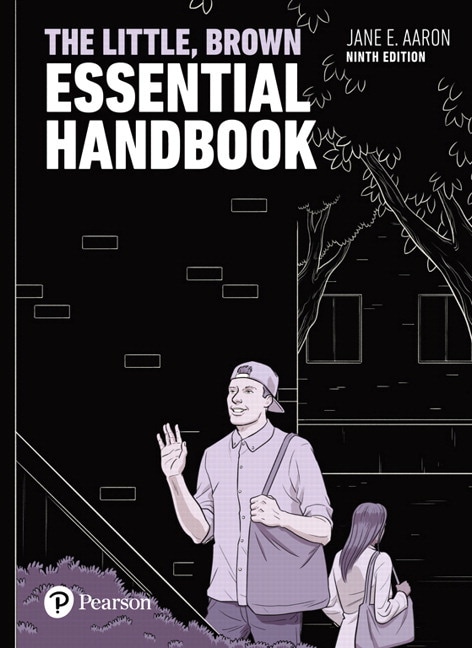
Little, Brown Essential Handbook, The, 9th edition
- Jane E. Aaron

- Study simpler and faster
Use flashcards and other study tools in your eTextbook
- Listen on the go
Learn how you like with full eTextbook audio
- Find it fast
Quickly navigate your eTextbook with search
- Stay organized
Access all your eTextbooks in one place
- Easily continue access
Keep learning with auto-renew
For first-year composition and undergraduate courses across the curriculum.
Cross-curricular outlook, straightforward presentation, essential coverage.
The Little, Brown Essential Handbook is brief, accessible, and pocket-sized--answering questions about the writing process, grammar and usage, researching writing, documentation, and writing in different disciplines. Through clear explanations and examples, minimal terminology, and specific tips for ESL writers, the text helps students at all levels of learning. Extensive sections on academic writing, research writing, source documentation, and document design support writers in all disciplines. The 9th Edition provides a better educational experience for instructors and students, with annotated examples of student writing and complete discussions of four major documentation styles, including MLA, APA, CMS, and CSE.
Now available! Free copy of the Pearson Guide to the 2021 MLA Handbook
Download your free copy, for use with this title. Contents include:
- What Is MLA Documentation Style?
- The Basic Principles of Documenting
- A Three-Step Process for Documenting Sources
- Creating Your Works-Cited List
- Creating In-Text Citations
- Researching Online
- Sample Works-Cited List
Published by Pearson (July 14th 2021) - Copyright © 2018
ISBN-13: 9780137506088
Subject: Composition
Category: Handbooks
PART 1: WRITING
- Academic writing
- The writing situation
- The writing processes
- Paragraphs
- Presenting writing
PART 2: COMMON ACADEMIC ASSIGNMENTS
- Critical analysis
- Argument
- Literary analysis
- Informative writing
- Oral presentations
PART 3: EFFECTIVE SENTENCES
- Emphasis
- Conciseness
- Parallelism
- Variety and details
- Appropriate words
- Exact words
PART 4: GRAMMATICAL SENTENCES
- Verb forms
- Verb tenses
- Verb mood
- Verb Voice
- Agreement of subject and verb
- Pronoun forms
- Agreement of pronoun and antecedent
- Reference of pronoun to antecedent
- Adjectives and adverbs
- Misplaced and dangling modifiers
- Sentence fragments
- Comma splices and fused sentences
PART 5: PUNCTUATION
- The comma
- The semicolon
- The colon
- The apostrophe
- Quotation marks
- End punctuation
- Other marks
PART 6: SPELLING AND MECHANICS
- Spelling and the hyphen
- Capital letters
- Italics or Underlining
- Abbreviations
- Numbers
PART 7: RESEARCH AND DOCUMENTATION
- Developing a research strategy
- Tracking sources
- Finding Sources
- Evaluating and synthesizing sources
- Integrating sources into your text
- Avoiding plagiarism
- Documenting sources
- MLA documentation and format
- APA documentation and format
- Chicago documentation and format
- CSE documentation